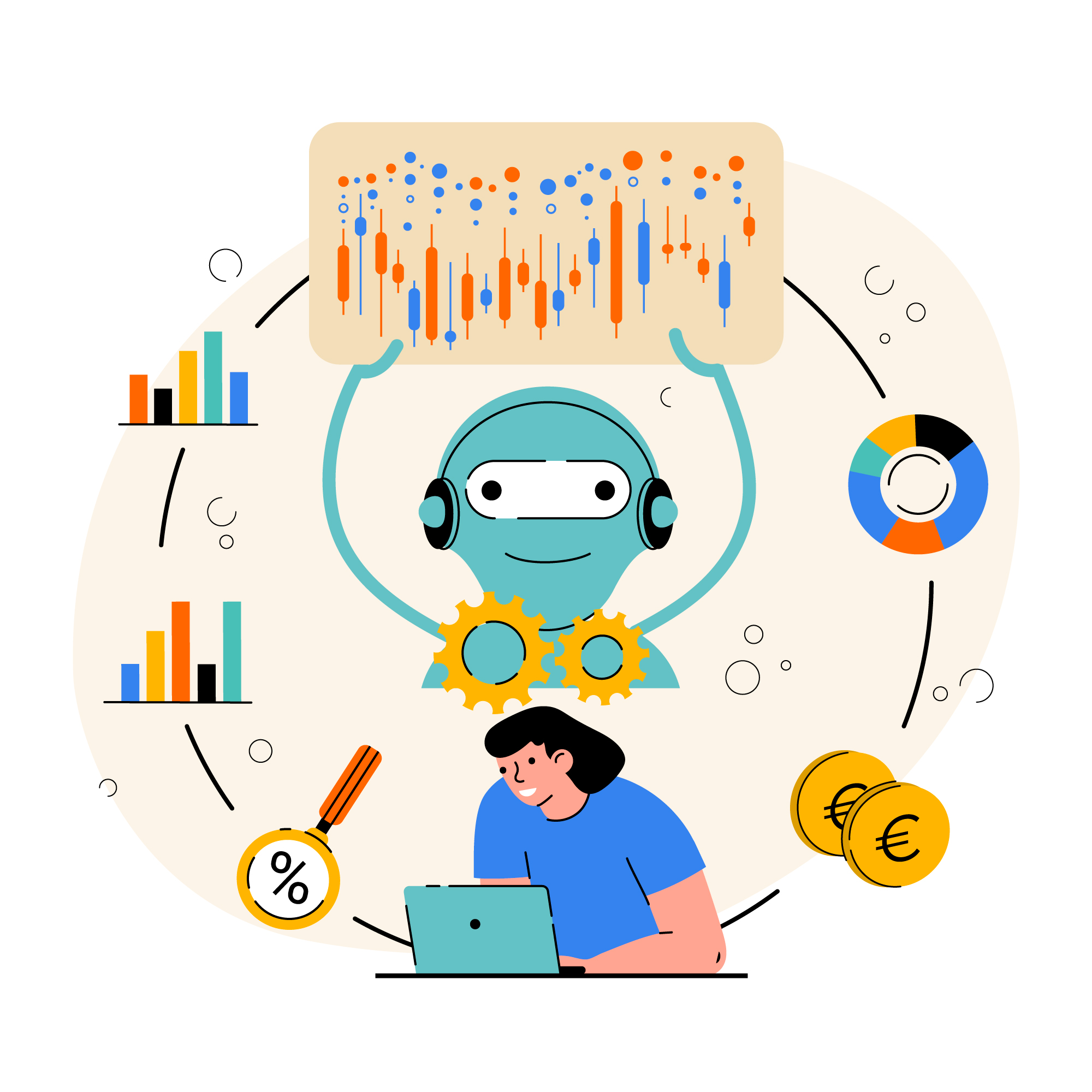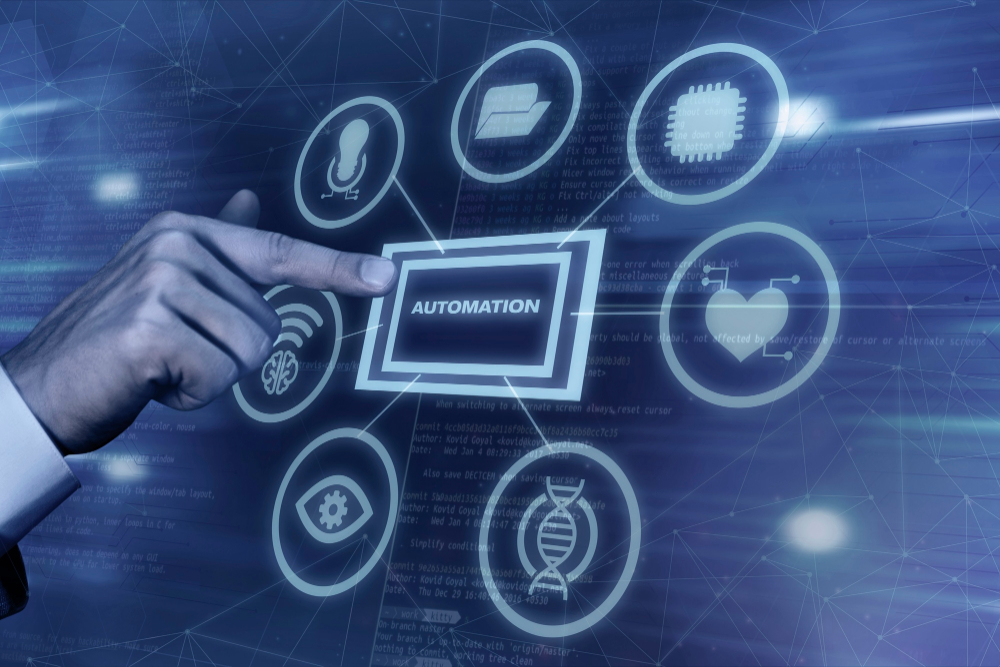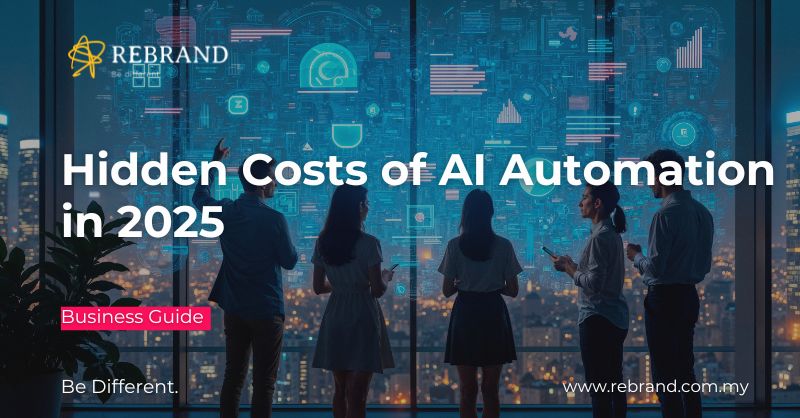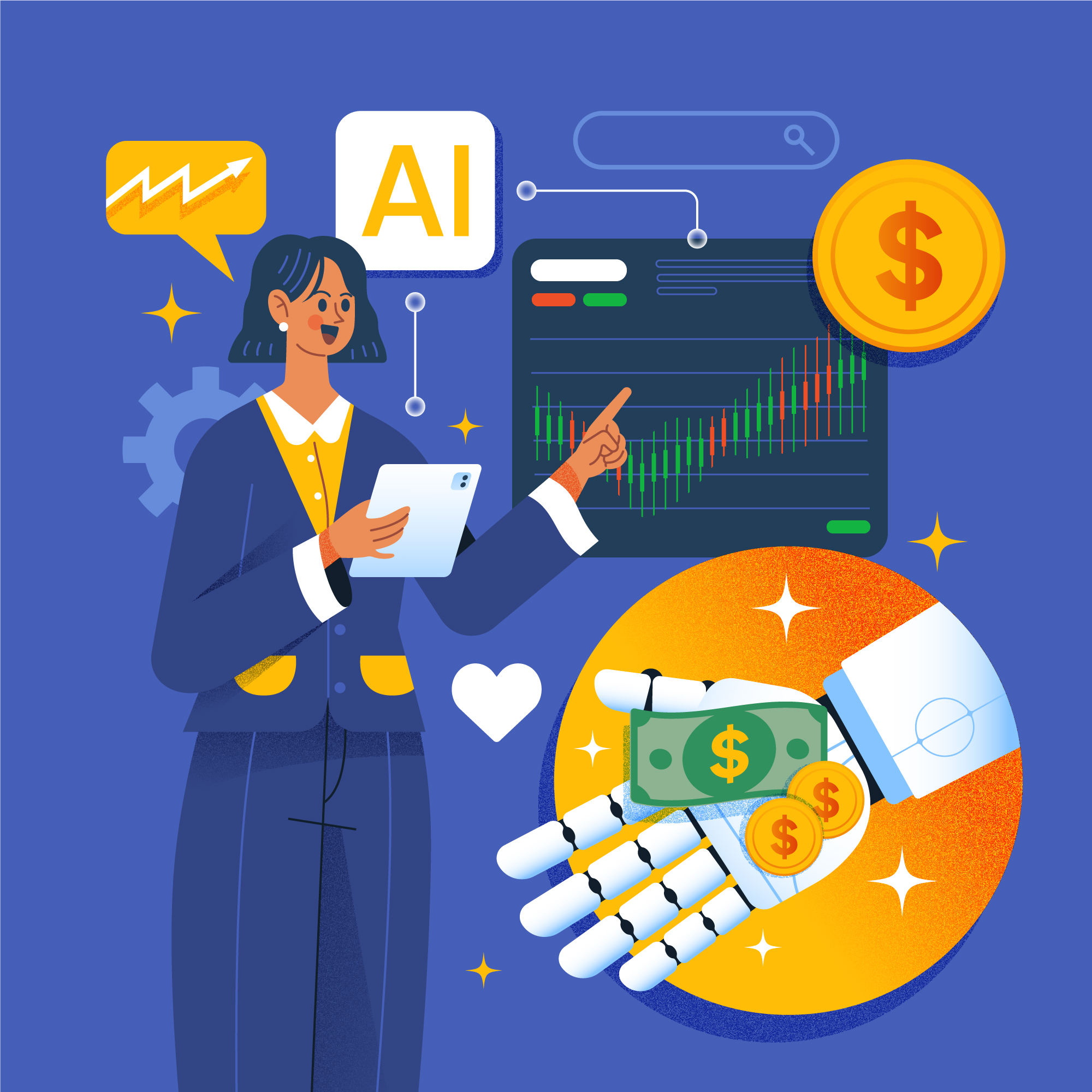The digital world is witnessing a revolution through AI automation. Business enterprises are racing to adopt these technologies, with 72% expected to optimize their operations by 2025. The global AI market will reach approximately $747.92 billion this year and grow at a compound annual rate of 20.4%. More businesses now seek specialized agencies to implement these solutions.
Success stories paint an impressive picture. DigiPix Inc. has helped over 150 businesses achieve 40% faster workflows and 30% higher ROI through tailored AI solutions. Yet many organizations miss vital costs when they pick an AI automation agency. Your industry expertise is a key factor. The hidden expenses can substantially affect your bottom line. The difference between enterprise AI agents and personal AI assistants plays a vital role when you evaluate AI automation services for business transformation.
This piece will help you spot the hidden expenses of implementing ai automation solutions. You’ll learn about cost traps in agency proposals and best practices to budget these initiatives in 2025. The right tools with secure data handling practices can protect your information and reduce potential risks. Our insights will help you make smart decisions about AI for workflow automation. You’ll avoid surprise costs and get the most from your investment.
Why AI Automation in Business Is Not a One-Time Cost
Businesses often think of AI automation as a one-time purchase instead of an ongoing investment. AI systems need constant attention, resources, and funding throughout their life. McKinsey research shows 92% of companies plan to increase their AI investments over the next three years. This trend shows companies now understand these technologies just need sustained financial backing.
The lifecycle of AI automation solutions
AI development lifecycle has several distinct phases. Each phase needs specific resources and expertise. The process starts with identifying problems and defining scope. This helps analyze business needs really well. Data collection and preparation comes next. Data scientists spend up to 80% of their time on this step alone.
After data preparation, the cycle continues with:
- Model design and selection of appropriate algorithms
- Training and testing with divided datasets
- Deployment and integration into existing systems
- Continuous monitoring and maintenance
This detailed life cycle shows why AI automation solutions need ongoing investment. You cannot treat them as “set and forget” technologies. Research shows nearly all companies invest in AI. Yet all but one of these leaders call their companies “mature” in deployment with AI merged into workflows.
AI systems’ performance depends on regular monitoring, retraining, and fine-tuning. Market conditions, customer behavior, and data patterns keep changing. AI models can lose effectiveness over time without proper maintenance. Companies must build core AI operations teams to watch model performance, fix issues, and make workflows efficient.
How costs evolve from setup to scale
Looking at finances, automation lifecycle costs usually reach 4-5 times the original investment. This multiplier effect catches many businesses off guard. They focus on setup costs and miss the long-term financial commitments.
The first costs include software licenses, data integration infrastructure, and staff training. These mark just the start of the cost trip. McKinsey’s research shows companies using AI automation can save 20% or more on labor. But these benefits come only with substantial ongoing investment.
The cost structure changes this way:
Setup costs lead the way with data migration, integration, and initial training. Operating costs follow with cloud storage fees, API charges, and security updates. Maintenance takes 10-20% of the yearly budget. This covers model retraining and performance improvements.
Organizations choosing modular approaches pay more upfront but might spend less over time. Studies prove modularization increases original costs but can reduce life cycle expenses with proper optimization. Companies should review this balance during planning.
As companies scale up, they face growth-related expenses. To name just one example, adaptable architectures add 15-25% to original costs. However, they cut future expansion costs by 40-60% compared to solutions needing major updates. Companies growing their AI programs must also prepare for data growth. AI systems typically see 40-60% yearly increases in data volume.
Success with AI automation in business requires understanding that implementation starts a continuing trip of investment, refinement, and adaptation.

8 Overlooked Expenses When Hiring an AI Automation Agency
The price tag you see for AI automation isn’t the whole story. Many businesses don’t see the extra costs until it’s too late. You should know about these hidden expenses before you sign a contract with an AI automation agency. This knowledge will protect your budget from surprises and letdowns.
- Data migration and formatting
Quality data forms the foundation of any good AI automation solution. Data migration can cost anywhere from RM10,000-RM50,000, based on how much data you have and how complex it is. The process needs you to pull information from old systems, map everything correctly, clean it up, transform it, and load it properly. Each step needs testing and validation. Companies with scattered IT systems spend 25–40% of their AI budget just on data work. AI-powered migration can cut these costs in half, but most proposals don’t spell out these expenses clearly.
- API development for third-party integrations
You’ll need custom API development to connect AI automation with your existing software. This connection will add RM5,000-RM20,000 to your project costs. Integration costs can vary wildly. Modern systems with API capabilities cost RM50,000-RM150,000 for medium-sized projects. Old systems with limited connection options can push these costs up to RM150,000-RM500,000. Make sure your proposal clearly shows these integration costs instead of hiding them in vague terms.
- Custom AI model development
Basic AI solutions rarely work for complex business needs without changes. Custom models typically cost between RM20,000 and RM100,000, plus extra for training and adjustments. Complex models need huge amounts of correctly labeled data. These advanced AI models need strong computing power, which doesn’t come cheap. OpenAI’s CEO recently shared that training their GPT-4 model cost more than $100 million.
- Security audits and compliance certifications
AI systems need thorough security audits to meet regulatory requirements. These safety measures protect your business from legal issues, a cost that many overlook. Meeting data rules like GDPR and industry standards adds RM5,000-RM20,000 to your implementation costs. Regular updates to stay compliant in changing regulations can make expenses grow substantially over time.
- Staff onboarding and training programs
Even the best AI automation tools won’t help much if your team doesn’t know how to use them. Training usually costs RM2,000-RM10,000 each year. The real expense goes beyond direct training costs – your team’s productivity drops during training. Look for agencies that offer flexible training sessions and custom learning paths for different roles to reduce these costs.
- Downtime during implementation
System downtime is a big hidden cost that agencies rarely mention. Studies show that 98% of organizations lose more than RM100,000 for every hour of downtime. A third of companies lose more than $1 million per hour. Full deployment takes 12-24 months, which means multiple possible downtimes. The actual cost of downtime is usually 4 to 15 times higher than what executives expect. This affects everything from wasted materials to customer relationships.
- Performance monitoring tools
You need monitoring tools to keep AI systems running at their best after implementation. These essential tools cost RM20,000-RM80,000 yearly. AI models get worse over time as market conditions and data patterns change. Good monitoring tools prevent expensive performance problems and system failures that could spread across your platforms.
- SLA penalties and overage charges
Service Level Agreements (SLAs) set performance targets and penalties for missing them. These contracts usually put some monthly fees at risk – typically matching the vendor’s profit margin – to cover missed SLA penalties. Many agencies also charge extra fees when you go over usage limits. Understanding these potential charges before signing will save your budget from surprises later.

How to Spot Hidden Costs in AI Automation Proposals
A sharp eye for detail helps spot issues in AI automation proposals. Attractive headline prices often hide costs that can push total expenses 30-50% higher than the original estimates. You need to spot these hidden charges before signing any contracts.
Analyzing vague line items in proposals
Unclear terms in proposals mask significant costs. Look carefully through AI automation agency documents and pay attention to unclear items like “system optimization,” “infrastructure preparation,” or “implementation services.” These broad terms often hide specific costs such as:
- Data storage requirements (RM50,000-RM200,000 for additional infrastructure)
- Computing power needs (RM10,000-RM100,000 for specialized computing)
- Network infrastructure upgrades (RM30,000-RM150,000)
Don’t accept broad categories. Ask for detailed breakdowns of all implementation parts. Knowing each pricing model’s advantages and limits is vital before launching any AI project. License-based models give predictable costs but need high upfront investment. Consumption-based pricing offers flexibility but needs careful budget planning.
Understanding what ‘support’ really includes
The meaning of “support” changes across AI automation services. Most standard support packages cover simple troubleshooting during business hours. Many vendors charge 15-25% of the original implementation cost each year for maintenance and updates.
Get into what maintenance activities are covered—security updates, performance tuning, or compatibility fixes. Check if the package has cloud and computing costs (RM5,000-RM50,000 monthly based on usage). Find out if system monitoring needs dedicated staff (1-3 full-time employees or equivalent outsourced services).
Identifying upsell traps in service tiers
Service tiers are another area where costs tend to spread quickly. Freemium models let you start with low risk and simple features, but expenses climb fast as needs grow. Subscription-based pricing gives steady payments but might bill you for unused capacity during quiet periods.
Teams running AI operations usually need RM100,000-RM300,000 yearly for dedicated staff to watch model performance. AI models lose effectiveness without regular updates, so you’ll need ongoing investment to keep them working well.
Revenue-shared pricing lines up vendor payments with results but gets complex as you scale up. Outcome-based pricing reduces risk but makes it hard to set clear performance metrics.

The Role of AI Automation Tools in Reducing Long-Term Costs
Tool selection plays a pivotal role in managing AI automation expenses over time. Businesses that implement AI automation see 30% lower compliance costs and 50% faster processing times. The right platform choice is vital for budget-friendly cost management.
Low-code platforms for workflow automation
Low-code platforms cut AI implementation costs through quick development features. These tools help citizen developers who have simple technical knowledge build functional business applications. Development teams multiply their productivity this way. Companies report 20% reduction in overall cycle time and 30% reduction in work hours after implementing low-code AI solutions. These platforms allow quick prototyping that shortens time-to-market for digital initiatives. The platforms’ auto-scaling, load balancing, and built-in security keep applications future-proof without constant infrastructure investments.
Open-source vs proprietary AI automation tools
The decision between open-source and proprietary AI tools shapes long-term expenses substantially. Open-source options remove licensing fees but add hidden costs through integration, customization, and maintenance. In stark comparison to this, proprietary solutions have higher upfront licensing fees but cut costs related to implementation time, support, and compliance. Open-source AI provides exceptional flexibility in scaling and modification. Proprietary AI delivers optimized performance with dedicated enterprise-grade security protocols. Yes, it is common for organizations to find that AI provider partnerships deliver value “at a fraction of the cost” compared to in-house development.
When to build vs buy AI automation solutions
The build-versus-buy choice carries major financial implications. Custom AI development costs range from MYR 446,638 to MYR 2,233,190 for enterprise-grade implementations. Off-the-shelf solutions start with monthly subscriptions of MYR 893-MYR 1,786. Mid-market companies see faster ROI with purchased solutions that deploy in 2-4 months versus 6-12 months for custom development. In spite of that, enterprise organizations with complex requirements often find better long-term economics with custom development, especially when the solution becomes essential to operations.
Best Practices for Budgeting AI Automation Services
Businesses need strategic financial planning to successfully implement ai automation. The year 2025 brings new ways to guide organizations. A structured budgeting approach helps alleviate unexpected expenses and maximize return on investment.
Creating a phased rollout plan
Breaking down your ai automation in business deployment into distinct phases brings major advantages. The process starts with a full analysis to find areas where automation will make the biggest difference. Next comes running controlled pilot projects in one or two departments. The final stage expands to full deployment once governance practices are 2-3 months old. This step-by-step method reduces risk because teams can spot issues early, allocate resources better, and build stakeholder confidence.
Companies using phased implementation see different ROI timelines. About 16% report major returns within the first year. Another 26% see ai automation solutions as long-term investments that pay off over time. Regular performance checks are vital to optimize outcomes and justify more investment.
Forecasting recurring vs one-time costs
Smart budgeting separates original implementation costs from day-to-day operational expenses. Companies must plan beyond the upfront licensing and infrastructure investments. Cloud storage fees, API access charges, and security updates add up over time. Day-to-day operational costs often end up 4-5 times higher than the original implementation expenses.
Pricing models keep evolving rapidly. About 53% of subscription-based businesses now include usage-based pricing – up from 31% last year. This change brings budget uncertainty. About 66.5% of IT leaders report budget problems from consumption-based pricing overages.
Negotiating flexible contracts with agencies
Smart companies test potential AI automation agency partners before selection. They ask how these partners would handle six vital implementation issues that come up in 90% of projects. This early preparation prevents extensive changes later. The budget structure depends on whether your project fits in your OPEX (focused on ROI) or innovation budget.
Vendor pricing strategies vary widely. Some include AI as added value while others charge much more for it. The key is to demand transparency in all agreements. Make sure contracts clearly state what happens if usage goes above defined limits or service needs change during implementation.
Conclusion
Navigating the True Cost Landscape of AI Automation
This piece explores the complex financial terrain of AI automation implementation. The AI market grows faster than ever and offers tremendous potential to transform businesses. All the same, success depends on understanding both visible and hidden costs that affect your bottom line.
AI automation is an ongoing experience, not a destination. Your business should prepare for expenses that cover the entire lifecycle—from original implementation through maintenance and scaling. Our research shows that the 8 overlooked expenses, including data migration, API development, and performance monitoring, add 30-50% beyond original estimates.
Your team needs to spot vague line items, understand support limitations, and identify upsell traps in proposals to budget accurately. Companies that skip this scrutiny risk major financial surprises after signing contracts.
Smart strategic approaches like phased rollouts and careful distinction between recurring and one-time costs will protect your investment. Implementation needs substantial resources. The right tools—whether low-code platforms or decisions about building versus buying—affect long-term economics by a lot.
Your AI automation investments should line up with specific business outcomes. Choose agencies with clear goals, complete due diligence, and realistic budget expectations. The original price tag matters, but the total ownership cost throughout the AI lifecycle determines your return on investment.
Organizations that recognize these hidden expenses and follow the best practices in this piece can tap into the full potential of AI automation. This approach helps avoid getting pricey mistakes in 2025 and beyond.
Don’t Let Hidden Costs Derail Your AI Strategy
AI automation is powerful—but only when planned with full visibility. At Rebrand, we help businesses in Malaysia and beyond implement AI solutions that are scalable, secure, and free from budget surprises.
Contact us today to embark on this exciting journey of growth and success.
Your brand and business deserve their very own story.
Check out our portfolio: www.rebrand.com.my/portfolio
Get a FREE 30-minute consultation with Rebrand Malaysia Now!
Subscribe to our newsletter to always be up-to-date with the latest online marketing trends and insights!
Call us at : 011-3957 0709
Email us at: [email protected]
WhatsApp: https://wa.link/razoe6
- Mobile App Development: The Ultimate Guide - July 28, 2025
- SEO Malaysia Guide 2025: What Actually Works - July 25, 2025
- PPC Agency Secrets: How Top Firms Cut Ad Waste & Double ROI - July 22, 2025




